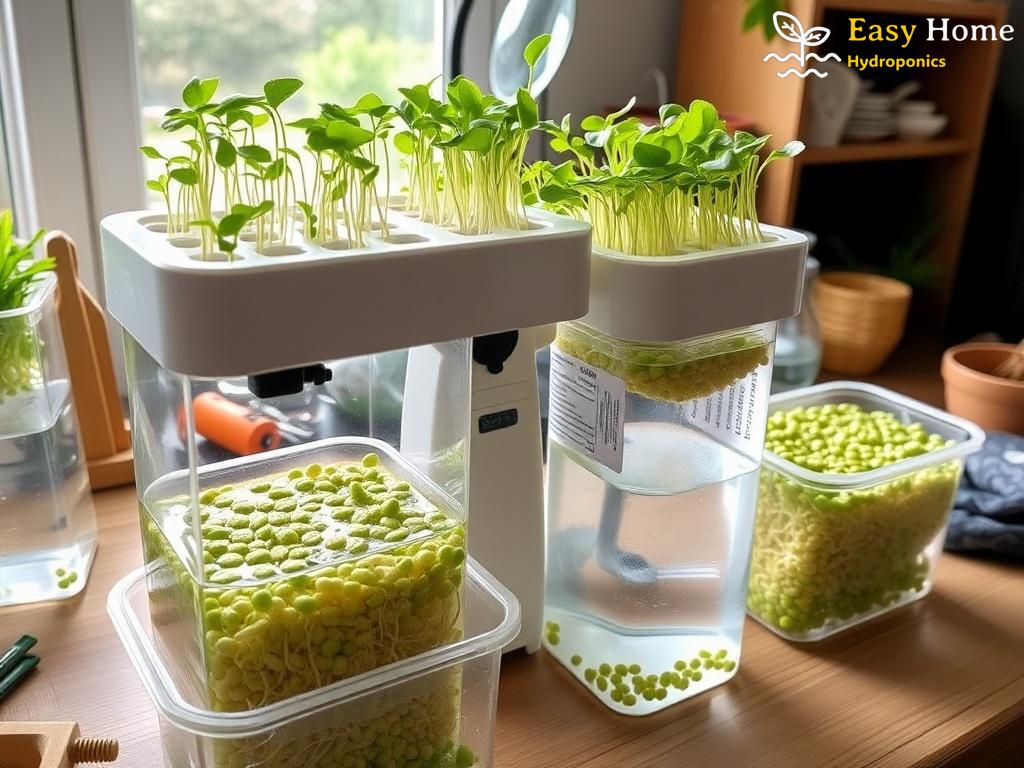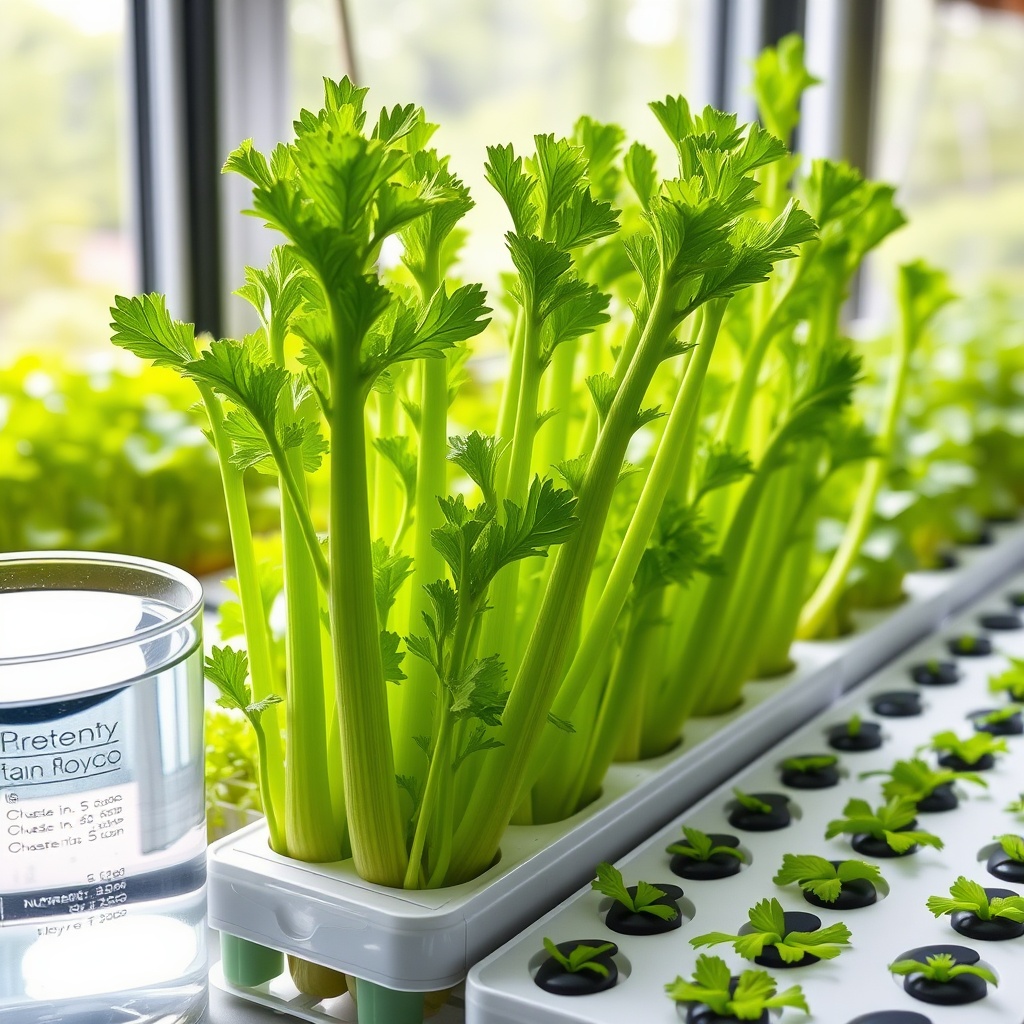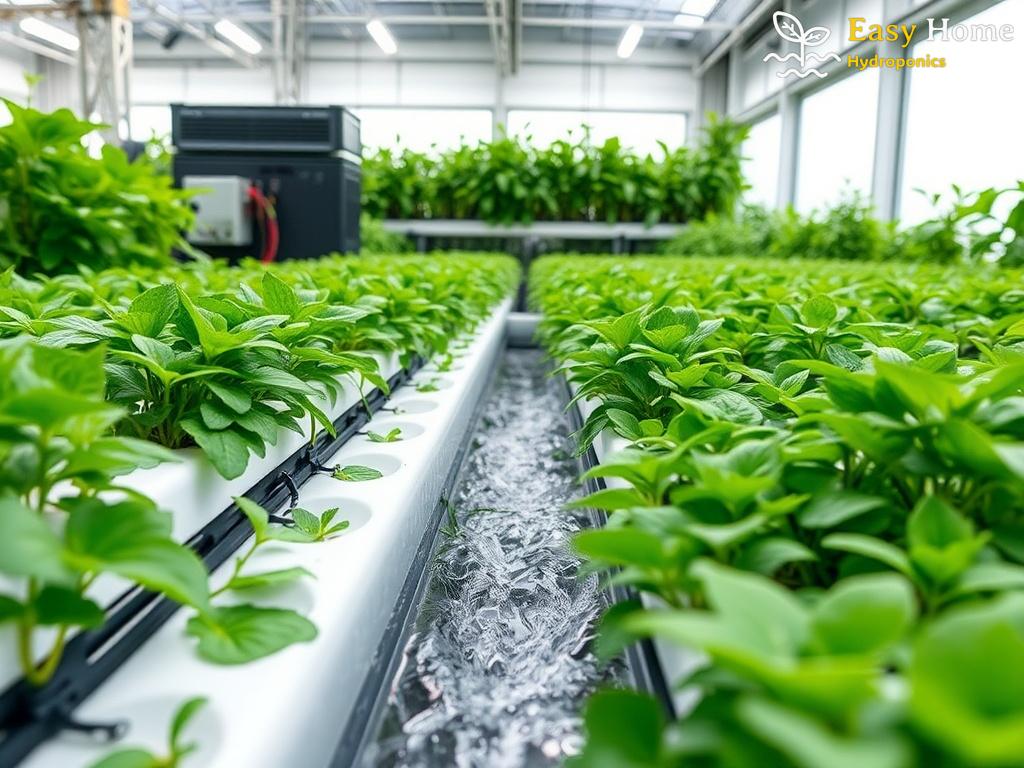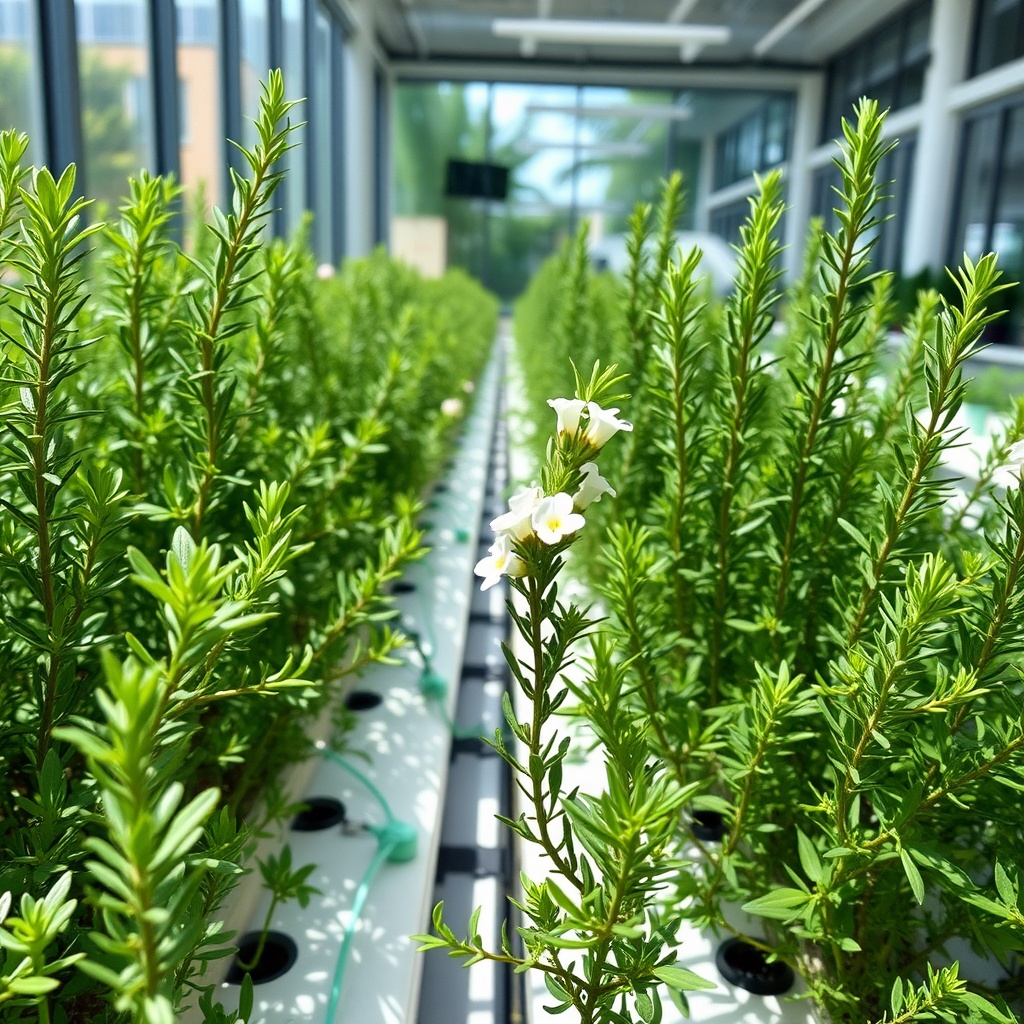The Hydroponic Advantage: Why Mung Beans?
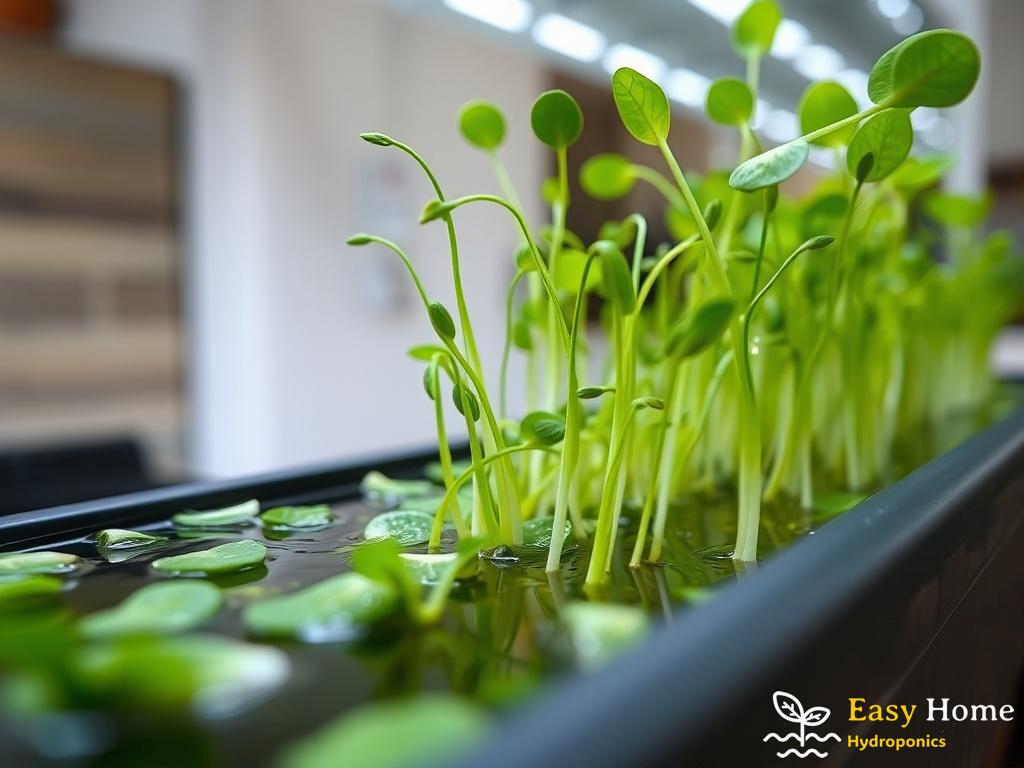
Mung beans are not just a staple in various cuisines; they are a nutritional powerhouse packed with benefits. When grown as sprouts in a hydroponic system, they provide a fresh, crunchy addition to salads, sandwiches, and various dishes. But why choose mung beans for hydroponic growing? The answer lies in their incredible adaptability and nutrient density.
One of the most enticing reasons to grow mung bean sprouts in a hydroponic system is their astonishing growth rate. With the right conditions, these tiny beans can sprout within just 2-3 days! This rapid turnover not only makes them an excellent choice for home growers but also ensures a continuous supply of fresh produce.
- Fast Germination: Mung beans can germinate in as little as 24 hours.
- Space Efficiency: Hydroponic systems allow for vertical growing, maximizing your space.
- Year-Round Harvest: With controlled environments, you can grow mung beans any time of year.
Hydroponics is often viewed as the gardening method of the future, and for good reason. By choosing mung beans, you not only benefit as a grower but also contribute positively to the environment. Hydroponic systems use significantly less water compared to traditional soil gardening and eliminate the need for harmful pesticides.
| Benefit | Traditional Gardening | Hydroponic System |
|---|---|---|
| Water Usage | High | Low |
| Pesticide Use | Common | Minimal |
| Space Requirement | High | Low |
By opting for hydroponic mung beans, you are not just cultivating a food source; you are participating in a sustainable future.
Setting Up Your DIY Hydroponic System
Have you ever dreamed of growing your own food but felt limited by space or resources? The beauty of hydroponic gardening, especially when it comes to mung bean sprouts, is that you can create a thriving mini-garden right in your home. Setting up your DIY hydroponic system doesn’t have to be complicated or expensive; it can be an exciting project that yields delicious results. Let’s explore the essential components and steps necessary to create a successful hydroponic environment for your mung beans.
To kickstart your hydroponic journey, you need to gather a few critical components. A container, nutrient-rich solution, and a light source are fundamental to ensuring your mung beans flourish. The container can range from a simple plastic bin to a sophisticated vertical garden setup, depending on your preference and available space. The nutrient solution, usually a balanced mix of water and hydroponic nutrients, will provide the essential elements that mung beans need to thrive. Lastly, adequate lighting, especially if you’re growing indoors, is vital to simulate sunlight, promoting strong growth.
Once you have your components, the next step is to create an optimal growing environment. Mung beans prefer a warm temperature, typically around 70 to 75 degrees Fahrenheit. A temperature-controlled area can make a significant difference in germination and growth rates. Additionally, consider the humidity levels; a moist environment can help seeds germinate faster. But be cautious; too much moisture may lead to mold. Regularly monitor your system to ensure that your mung beans are receiving just the right amount of water and nutrients. Remember, the goal is to create a balanced ecosystem where your plants can thrive without the complications often associated with soil gardening.
As your mung beans begin to sprout, maintaining the system becomes crucial. Check the nutrient solution’s pH level, aiming for a range of 5.5 to 6.5 for optimal nutrient absorption. Regularly replace the nutrient solution every couple of weeks to prevent stagnation and nutrient depletion. Additionally, keep an eye on the light exposure; mung beans benefit from around 12 to 16 hours of light daily. With a bit of diligence, your DIY hydroponic system can become a sustainable source of fresh sprouts, ready to enhance your meals.
Nurturing Growth: Watering and Nutrient Tips
When it comes to achieving a bountiful harvest of mung bean sprouts, understanding the nuances of watering and nutrient application can make all the difference. These tiny beans, known for their rapid growth and nutritional benefits, thrive in a hydroponic environment where water and nutrients are meticulously balanced. Let’s dive into the essential strategies to nurture your mung beans effectively, ensuring they reach their full potential.
Watering in a hydroponic system isn’t as straightforward as filling a container and calling it a day; it’s an intricate dance that requires attention to detail. Mung beans, while resilient, prefer a consistent moisture level without drowning in excess water. The key is to maintain a moist environment that allows the roots to absorb water efficiently. Start by ensuring that your nutrient solution is well-aerated, as this promotes oxygen flow to the roots, enhancing growth. Regularly monitor the water levels and top off as needed, making sure to avoid stagnation, which can lead to root rot.
In a hydroponic setup, nutrients are delivered directly to the plants, which means that the composition of your nutrient solution is crucial. Mung beans require a specific mix of macronutrients and micronutrients to thrive. A balanced nutrient solution should include nitrogen, phosphorus, and potassium, along with trace elements like iron and magnesium. Regular testing of the nutrient solution’s pH is essential, as mung beans flourish in a slightly acidic environment, ideally between 5.5 and 6.5. If adjustments are necessary, consider using pH up or down solutions to fine-tune for optimal growth. Additionally, be mindful of nutrient concentration; too much can harm the plants, while too little can stunt their growth. A good rule of thumb is to replace your nutrient solution every two weeks to maintain freshness and balance.
In summary, nurturing your mung bean sprouts involves a careful balance of watering and nutrient management. By mastering these elements, you not only enhance the growth of your plants but also contribute to a sustainable food source right in your home. As you embark on this rewarding journey of hydroponic gardening, remember that the care you provide will directly reflect in the crunch and quality of your home-grown mung bean sprouts.
Harvesting Mung Bean Sprouts: Timing is Everything
When it comes to cultivating mung bean sprouts in your DIY hydroponic system, one of the most crucial aspects is knowing when to harvest. Timing not only impacts the flavor and texture of your sprouts but also determines the nutritional quality that you can enjoy. This simple yet vital step can make all the difference between a mediocre crop and a bountiful harvest that will elevate your meals to new heights.
The Perfect Moment for Harvesting is when your mung bean sprouts are at their prime, typically around 5 to 7 days after germination. During this time, you will notice your sprouts transitioning from tiny green shoots to vibrant, fluffy greens. This stage is essential as the sprouts are still tender and packed with nutrients, making them an excellent addition to salads, sandwiches, and stir-fries. If you wait too long, the sprouts may become tough and less appealing, losing that satisfying crunch that makes them so delightful.
To ensure a successful harvest, it’s advisable to keep a close eye on the growth progress. An effective strategy is to monitor the length of the sprouts; ideally, they should be around 2 to 4 inches long. Additionally, the color should be a bright green, indicating healthy growth. If you notice dull or yellowing sprouts, it may be a sign that they are past their prime, which could affect both taste and nutritional value.
Harvesting Techniques play a significant role in preserving the quality of your mung bean sprouts. Using clean, sharp scissors, cut the sprouts just above the root zone, being careful not to damage the remaining roots or the surrounding sprouts. This method ensures that you can enjoy a fresh batch while allowing the remaining sprouts to continue growing if you choose to stagger your harvest. After cutting, give the sprouts a gentle rinse under cool water to remove any debris or remaining roots. This simple wash not only enhances their appearance but also ensures that they are clean and ready for consumption.
Another important factor to consider is the storage of your harvested mung bean sprouts. Ideally, they should be consumed fresh, but if you need to store them, place them in a breathable container lined with a damp paper towel, and keep them in the refrigerator. This will help maintain their crispness and prevent premature spoilage. Remember, the fresher the sprouts, the more nutrients they will retain, allowing you to reap the full benefits of your hydroponic gardening efforts.
Common Challenges and Solutions in Hydroponic Sprouting
Embarking on the journey of cultivating mung bean sprouts in a DIY hydroponic system can be incredibly rewarding, but it is not without its obstacles. From nutrient imbalances to environmental fluctuations, novice gardeners may encounter a variety of challenges that can hinder their success. Fortunately, understanding these common pitfalls and implementing effective solutions can turn your hydroponic experience into a thriving enterprise. Let’s dive into the most prevalent issues faced by hydroponic sprout enthusiasts and discover ways to overcome them.
One of the most significant challenges in hydroponic gardening is maintaining a balanced nutrient solution. Mung beans, like all plants, require a precise mix of essential nutrients to flourish. An excess or deficiency can lead to stunted growth or even plant death. Regular testing of your nutrient solution is crucial. Using a nutrient meter can help you monitor the levels of nitrogen, phosphorus, potassium, and trace elements effectively.
Solution: To tackle nutrient imbalance, consider the following steps:
- Test your nutrient solution weekly to ensure optimal levels.
- Adjust the nutrient concentration based on the growth stage of your mung beans.
- Be cautious with organic solutions; they can vary significantly in strength.
The quality of water used in your hydroponic system is paramount. Contaminants or chlorine in tap water can adversely affect the health of your mung bean sprouts. It’s essential to use clean, filtered water to promote healthy growth.
Solution: To ensure water quality:
- Use distilled or filtered water to eliminate harmful substances.
- Allow tap water to sit for 24 hours before use to let chlorine dissipate.
- Regularly check the pH level of your water, aiming for a range of 5.5 to 6.5.
Mung beans thrive in a stable environment, with temperature being a critical factor. Sudden changes in temperature can stress the plants, leading to poor growth or disease. Maintaining a consistent temperature around 70 to 75 degrees Fahrenheit is ideal for optimal sprouting.
Solution: To combat environmental fluctuations, consider these strategies:
- Invest in a thermometer to monitor the temperature of your growing area.
- Use heat mats or cooling pads to stabilize temperatures, especially in extreme weather.
- Ensure good air circulation to prevent overheating or humidity buildup.
By understanding these common challenges and their solutions, you can create a more conducive environment for cultivating mung bean sprouts in your DIY hydroponic system. Armed with this knowledge, you’re well on your way to enjoying a steady supply of fresh, nutritious sprouts that can elevate your culinary experiences.

